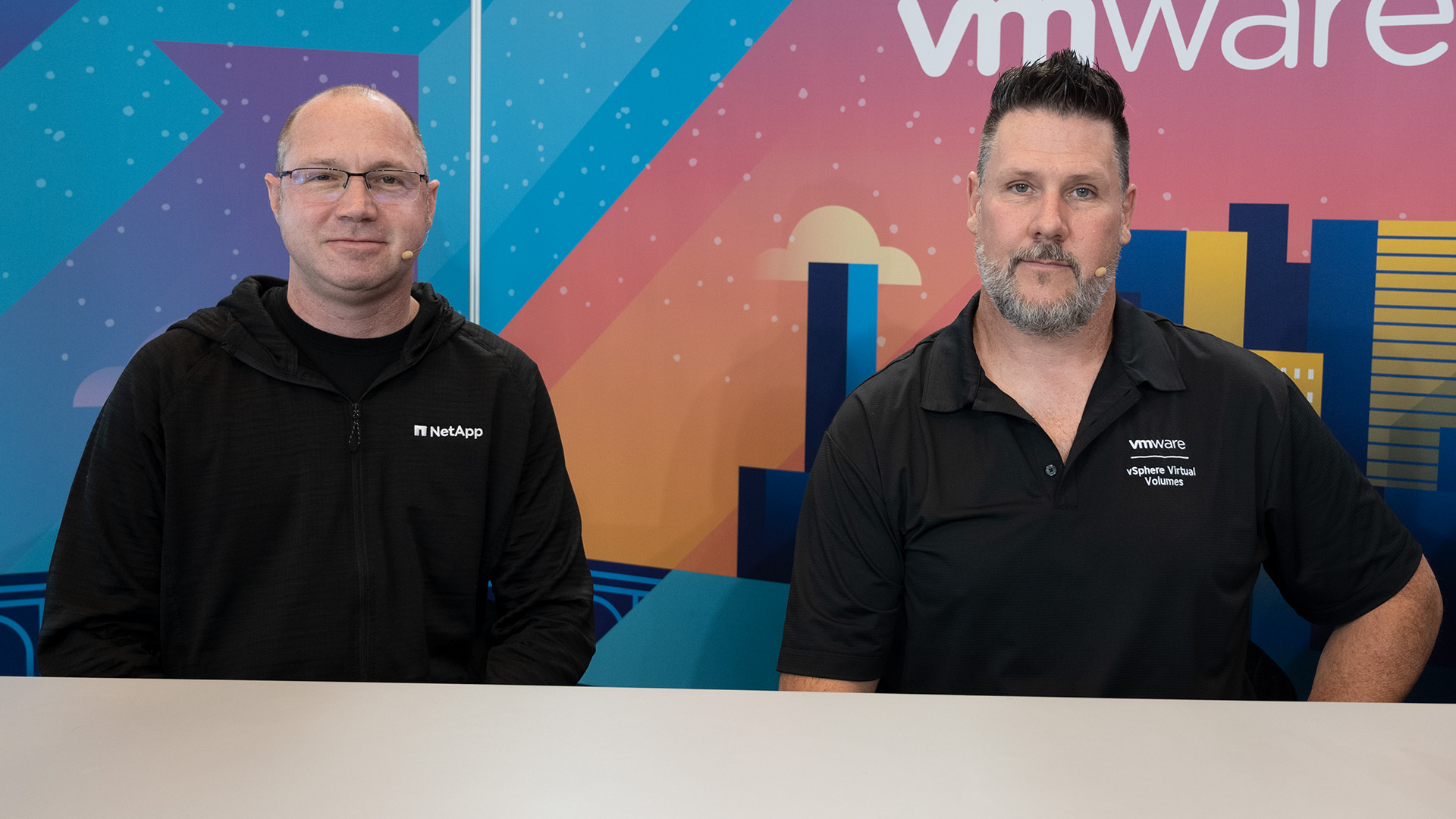 INFRA
INFRA
 INFRA
INFRA
 INFRA
INFRA
In the realm of software-defined storage, leveraging the intelligence and horsepower of a storage array has become a notable trend.
Just like a raw device map, or RDM, virtual volumes, or vVols, present all the storage array features up to vSphere and manage them through policy-based management, according to Jason Massae (pictured, right), staff technical marketing architect of storage and vVols at VMware Inc., who said vVols streamline storage operations and renders finer control.
“NetApp was one of the original design partners for vVols. With more current stuff with virtual volumes, NetApp is back,” Massae stated. “Instead of applying storage capabilities at a data store level, we’re now applying them at a VM or an application level. So you can have one data store and multiple VMs, and every VM can have a different storage capability managed by a policy that the VI admin gets to manage.”
Massae and Chance Bingen (pictured), technical marketing engineer at NetApp Inc., spoke with theCUBE industry analysts Lisa Martin and David Nicholson at last August’s VMware Explore, during an exclusive broadcast on theCUBE, SiliconANGLE Media’s livestreaming studio. They discussed how vVols are proving to be game-changers in the storage arena. (* Disclosure below.)
Through advanced capabilities, vVols unravel the unthinkable, according to Bingen, and examine the actual nature of the array and other traits, such as whether a data store is encrypted and secure.
“What vVols, along with the VASA protocol, brings to the table is the ability to expose things that are just impossible to expose via the data protocols themselves,” Bingen stated. “It just allows you to do so much more with the advanced capabilities that modern storage arrays have than you could ever do if you were just using the data protocols by themselves.”
Despite vVols being mostly on-prem, they aid in the cloud migration journey, depending on the storage framework, according to Massae. vVols are also a perfect fit for enterprises adopting a cloud service-provider model.
“When you have the storage architecture, vVols make it much easier to migrate up into the cloud, because you’re not trying to migrate individual VMs that are on another type of system,” he said. “Whatever it might be, those objects are already their own entity. So it makes it very easy to migrate them on- and off-prem.”
For a strong service catalog, Bingen believes vVols come in handy. They also make it possible to offer Amazon EBS in a native VMware stack.
“When you’re looking to build a robust service catalog and you want to be able to meet all these — like we mentioned Tanzu — you’re able to provide the persistent volumes for your Kubernetes containers,” he said. “It’s all handled by storage policies; Kubernetes storage classes, which are natively, mapped to VM storage policies through Tanzu. So it gives you the ability to offer all of these services in a rich and robust content catalog.”
The partnership between VMware and NetApp goes beyond design, according to Massae. The collaboration has played an instrumental role in developing more innovations.
“One of the things that we worked with NetApp that was part of the design partnership was the NVMe over Fabrics protocol,” he explained. “You can now do vVols with NVMe over Fabrics. And, again, that was something that we worked with NetApp to be a design partner for them.”
Here’s the complete video interview, part of SiliconANGLE’s and theCUBE’s coverage of VMware Explore:
(* Disclosure: NetApp Inc. sponsored this segment of theCUBE. Neither NetApp nor other sponsors have editorial control over content on theCUBE or SiliconANGLE.)
THANK YOU